
How to Use SHT40: Examples, Pinouts, and Specs
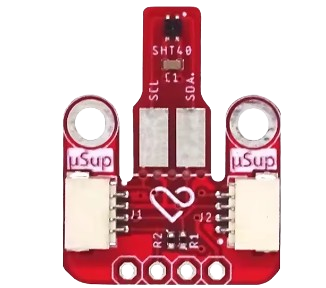
 Design with SHT40 in Cirkit Designer
Design with SHT40 in Cirkit DesignerIntroduction
The SHT40, manufactured by Laskakit (Part ID: Senzor Tem,Hum), is a digital humidity and temperature sensor designed for precise environmental monitoring. It offers high accuracy, low power consumption, and a compact form factor, making it ideal for a wide range of applications. The SHT40 communicates via an I²C interface, ensuring easy integration into various systems.
Explore Projects Built with SHT40
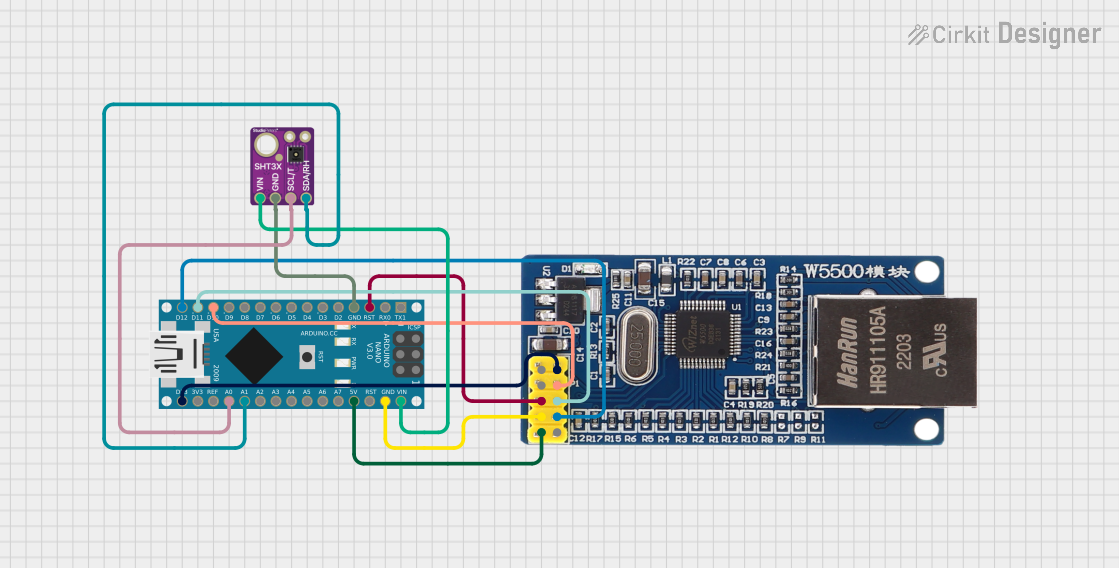
 Open Project in Cirkit Designer
Open Project in Cirkit Designer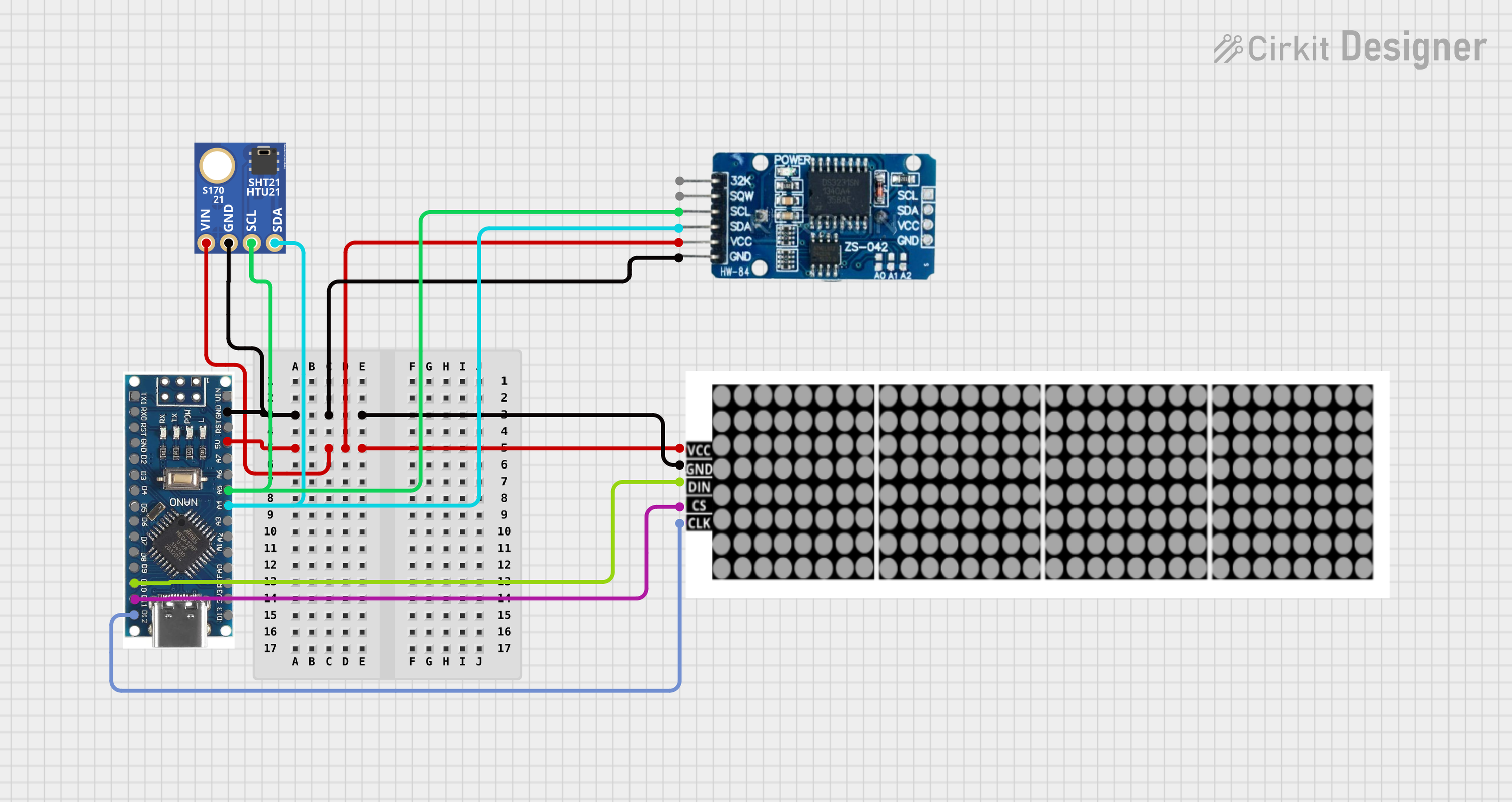
 Open Project in Cirkit Designer
Open Project in Cirkit Designer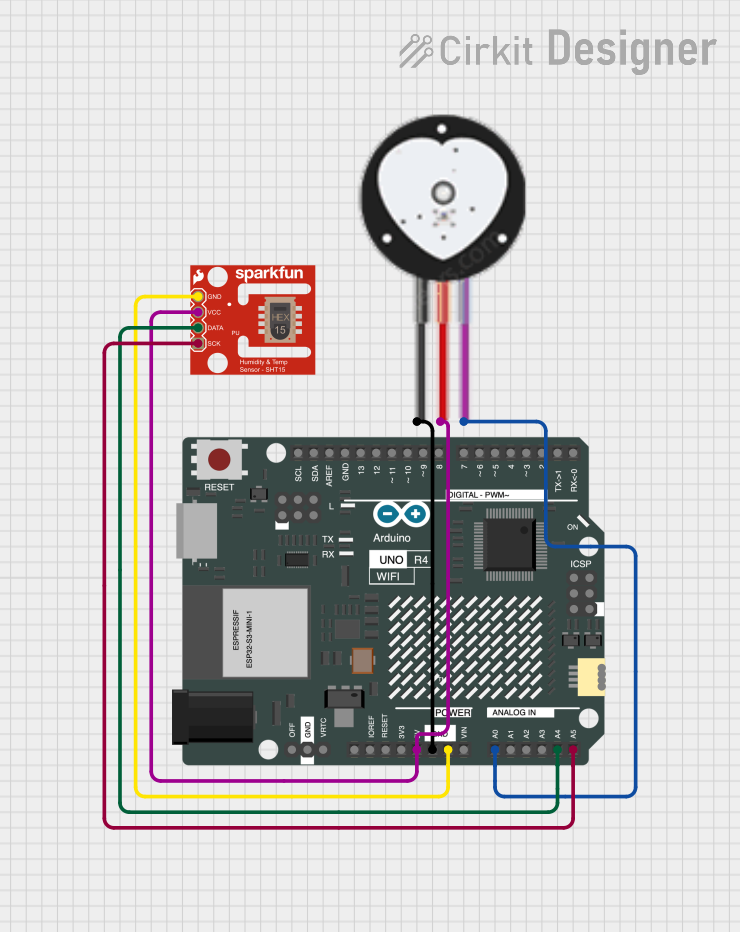
 Open Project in Cirkit Designer
Open Project in Cirkit Designer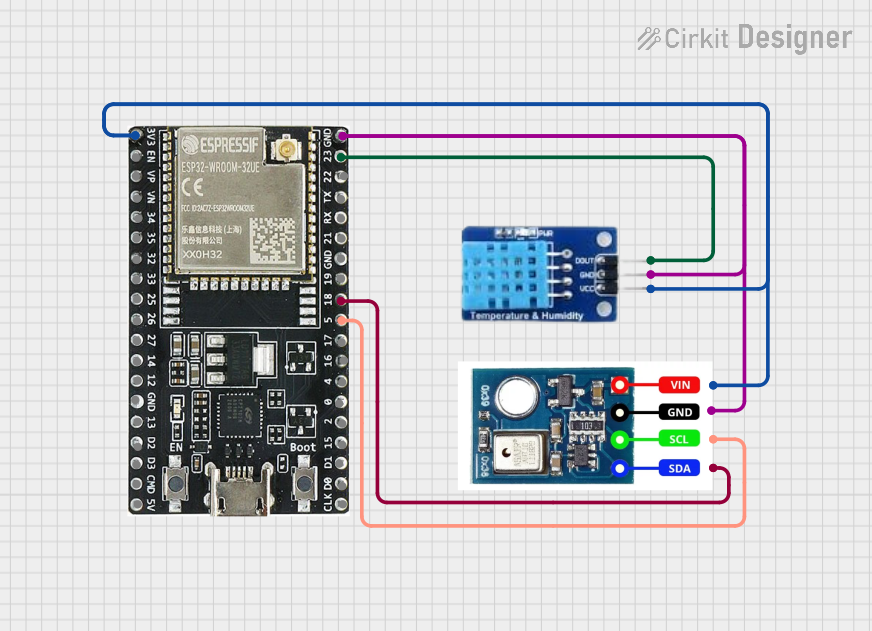
 Open Project in Cirkit Designer
Open Project in Cirkit DesignerExplore Projects Built with SHT40

 Open Project in Cirkit Designer
Open Project in Cirkit Designer
 Open Project in Cirkit Designer
Open Project in Cirkit Designer
 Open Project in Cirkit Designer
Open Project in Cirkit Designer
 Open Project in Cirkit Designer
Open Project in Cirkit DesignerCommon Applications
- HVAC systems for climate control
- Weather stations and environmental monitoring
- IoT devices and smart home applications
- Industrial process monitoring
- Consumer electronics, such as wearables and smartphones
Technical Specifications
The SHT40 is engineered to deliver reliable performance in demanding environments. Below are its key technical details:
| Parameter | Value |
|---|---|
| Supply Voltage (VDD) | 2.4V to 5.5V |
| Average Current | 0.4 µA (at 1 measurement per second) |
| Measurement Range | Humidity: 0% to 100% RH |
| Temperature: -40°C to +125°C | |
| Accuracy | Humidity: ±1.8% RH (typical) |
| Temperature: ±0.2°C (typical) | |
| Communication Interface | I²C |
| I²C Address | 0x44 (default) |
| Operating Temperature | -40°C to +125°C |
| Package Dimensions | 1.5 mm x 1.5 mm x 0.5 mm |
Pin Configuration and Descriptions
The SHT40 has a simple pinout, as shown in the table below:
| Pin Name | Description |
|---|---|
| VDD | Power supply (2.4V to 5.5V) |
| GND | Ground |
| SDA | I²C data line |
| SCL | I²C clock line |
Usage Instructions
The SHT40 is straightforward to use in a circuit, thanks to its I²C interface. Below are the steps and considerations for integrating the sensor:
Circuit Connection
- Connect the VDD pin to a 3.3V or 5V power supply.
- Connect the GND pin to the ground of your circuit.
- Connect the SDA pin to the I²C data line of your microcontroller.
- Connect the SCL pin to the I²C clock line of your microcontroller.
- Use pull-up resistors (typically 4.7 kΩ) on the SDA and SCL lines if not already present.
Important Considerations
- Ensure the supply voltage is within the specified range (2.4V to 5.5V).
- Avoid exposing the sensor to extreme conditions (e.g., condensation or high humidity for prolonged periods) to maintain accuracy.
- Use proper decoupling capacitors (e.g., 0.1 µF) near the VDD pin to stabilize the power supply.
Example Code for Arduino UNO
Below is an example of how to use the SHT40 with an Arduino UNO. This code reads temperature and humidity data from the sensor and prints it to the Serial Monitor.
#include <Wire.h>
#include "Adafruit_SHT4x.h" // Include the Adafruit SHT4x library
Adafruit_SHT4x sht40; // Create an SHT40 object
void setup() {
Serial.begin(9600); // Initialize Serial Monitor
while (!Serial) delay(10); // Wait for Serial Monitor to open
Serial.println("SHT40 Sensor Test");
if (!sht40.begin()) {
Serial.println("Failed to find SHT40 sensor!");
while (1) delay(10); // Halt if sensor is not found
}
Serial.println("SHT40 sensor found!");
sht40.setPrecision(SHT4X_HIGH_PRECISION); // Set high precision mode
}
void loop() {
sensors_event_t humidity, temp;
if (!sht40.getEvent(&humidity, &temp)) {
Serial.println("Failed to read data from SHT40!");
return;
}
// Print temperature and humidity readings
Serial.print("Temperature: ");
Serial.print(temp.temperature);
Serial.println(" °C");
Serial.print("Humidity: ");
Serial.print(humidity.relative_humidity);
Serial.println(" %");
delay(1000); // Wait 1 second before the next reading
}
Notes on the Code
- The code uses the Adafruit SHT4x library, which simplifies communication with the sensor. Install the library via the Arduino Library Manager.
- The
setPrecisionfunction allows you to configure the sensor's precision mode. High precision is recommended for most applications.
Troubleshooting and FAQs
Common Issues
Sensor not detected by the microcontroller:
- Ensure the I²C address (default: 0x44) matches the one in your code.
- Check the wiring, especially the SDA and SCL connections.
- Verify that pull-up resistors are present on the I²C lines.
Incorrect or unstable readings:
- Ensure the sensor is not exposed to condensation or contaminants.
- Verify that the power supply is stable and within the specified range.
- Check for proper decoupling capacitors near the VDD pin.
I²C communication errors:
- Confirm that the microcontroller's I²C clock speed is compatible with the sensor.
- Ensure no other devices on the I²C bus are causing address conflicts.
FAQs
Q: Can the SHT40 operate at 5V logic levels?
A: Yes, the SHT40 supports a supply voltage range of 2.4V to 5.5V, making it compatible with both 3.3V and 5V systems.
Q: How often should I take measurements?
A: For most applications, a measurement interval of 1 second is sufficient. However, you can adjust this based on your specific requirements.
Q: Is the sensor factory-calibrated?
A: Yes, the SHT40 is factory-calibrated for both humidity and temperature, ensuring accurate measurements out of the box.
Q: Can I use the SHT40 in outdoor environments?
A: While the SHT40 is robust, it is recommended to use a protective enclosure to shield it from direct exposure to water, dust, and extreme conditions.
By following this documentation, you can effectively integrate the SHT40 into your projects and achieve reliable environmental monitoring.